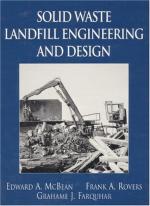|
This section contains 643 words (approx. 3 pages at 300 words per page) |

|
The Resource Conservation and Recovery Act (RCRA) defines solid waste as garbage, refuse, sludge from sewage treatment plants, ash from incinerators, mining waste, construction and demolition materials. It also includes some small quantities of hazardous waste. There are several acceptable methods for disposing of these wastes. These include incineration, composting, recycling, industrial surface impoundments, and landfills. In terms of personal inconvenience, disposing of waste in landfills is easier than the other methods. Waste can have any shape or condition prior to being placed into a landfill. This is different from composting and incineration. Waste to be composted must be biodegradable and have maximal surface area to hasten the process of composting. Waste to be incinerated must be combustible and be reduced into small pieces to maximize surface area and promote burning. Waste to be disposed of in a landfill is usually broken down with...
|
This section contains 643 words (approx. 3 pages at 300 words per page) |

|


